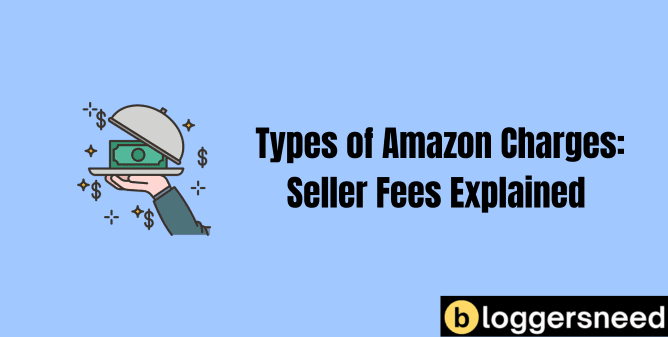
So, you’ve decided to start business with the Amazon FBA, where every move and sway has its own cost.
As you master the art of selling on Amazon, you’ll familiarize yourself with the various charges that play a critical role in your business model. You’ll need to consider subscription fees if you’re going the professional route, while individual account holders face per-item fees.
Referral fees carve out a percentage of your revenue, varying by category, and if you opt for FBA, you’ll juggle additional fees based on size and weight.
Don’t overlook shipping charges, which can either be a burden or a boon, depending on how you manage them.
Navigating this complex fee structure, your skill in handling these costs can lay the groundwork for your business’s success on this vast online marketplace.
Table of Contents
Amazon Subscription Fees
Amazon’s subscription fees for your professional seller account are a fixed monthly charge, in contrast to the per-item fee applied if you operate an individual seller account. As a professional seller, you’ll pay a monthly subscription fee for individual plan that grants you access to a suite of tools designed for high-volume sellers who are serious about maximizing their online presence.
Indian Plan costs: 0.99$ Per item sold
Individual sellers, on the other hand, avoid this monthly fee but face a cost for each item sold, a non-subscription fee adjustment that may seem minimal at first but can add up with increased sales volume. It’s essential to understand these differences as they can significantly impact your business model and bottom line.
Standard Plan Costs: $39.99 per month
Choose wisely based on your sales strategy and the scale at which you’re operating.
Individual Per-Item Fees
As a counterbalance to the monthly subscription model, you’ll incur a $0.99 per-item fee each time you sell a product under an Individual Seller account. This fee per unit sold is essential to your cost calculations when determining profitability. Unlike the Professional Seller account with its flat monthly fee, as an individual seller, you’re charged this amazon seller fee for every item that changes hands through the platform.
Understanding these amazon seller fees is critical to optimizing your business model. The individual per-item fee isn’t a one-time charge but a consistent cost that will affect your pricing strategy and bottom line. Mastery of these details ensures you’re not caught off-guard by the per item sold expenses that accompany each transaction.
Referral Fee Structure
You’ll notice that a referral fee, varying from 6% to 45%, is deducted from each of your sales, depending on the category of the item sold. This referral fee structure is a commission you pay to Amazon for access to their vast marketplace and customer base.
Here’s a breakdown of Amazon referral fees:
- Percentage of the items’ selling price
- Most categories: 15%
- Special categories: Can be as low as 6% or as high as 45%
- Minimum referral fee
- Applied when: The percentage fee is less than the minimum
- Greater fee prevails: You’ll pay either the percentage or the minimum, whichever is higher
Mastering this structure ensures you’re not caught off-guard by the costs of selling on Amazon.
Fulfillment by Amazon Costs
Moving on to Fulfillment by Amazon (FBA), you’ll encounter additional costs based on the size and weight of your products, which cover a range of services from storage to shipping. Understanding FBA fees is crucial for managing your online business effectively.
These fees include a storage fee for housing your inventory in Amazon’s warehouses. You’ll also pay an inbound transportation fee, which covers the cost of shipping your products to Amazon.
Moreover, if items are returned, a restocking fee may apply. It’s important to note that these fees aren’t static; they can vary depending on the time of year, with higher rates typically during the peak holiday season.
Mastery of FBA’s cost structure is vital to optimize your profits while leveraging Amazon’s extensive fulfillment network.
Shipping and Handling Charges
When selling on Amazon, you’re also responsible for shipping and handling charges, which vary depending on whether you fulfill orders yourself or use Fulfillment by Amazon (FBA). Master the intricacies of these fees to optimize your costs:
- Self-Fulfillment
- You set shipping fees, reflected in the sales income Amazon pays out.
- Be mindful of the shipping holdback fee, which can affect your margins.
- Fulfillment by Amazon (FBA)
- Amazon charges you for the complete shipping service, including picking, packing, and shipping.
- Understand FBA inventory reimbursement for lost or damaged goods.
Monitor these expenses closely. Utilize tools like Shopkeeper for accurate revenue tracking, and always strive to choose the most efficient shipping service to enhance your profitability.
Variable and Fixed Closing Fees
As a seller dealing with media items, you’ll incur a flat $1.80 variable or fixed closing fee on each sale, in addition to the standard referral fees. This fee is charged per item and is non-negotiable, forming a critical component of your overall Amazon fees. It’s essential to factor this into your pricing strategy, as the item price must cover both the referral percentage and the closing fee to maintain profitability.
Amazon’s fee structure is designed to account for the unique handling and processing of media items. Whether you’re selling a rare book, the latest video game, or vinyl records, mastering the balance between these fees and your selling price is crucial.
Return Processing Charges
Beyond the variable and fixed closing fees for media items, you’ll also encounter return processing charges if Amazon manages the returns of your products. These charges cover the costs associated with returns processing and refund administration when an item is returned.
- Return Processing Charges:
- Refund Administration: A fee deducted for processing a refund for a returned item.
- Restocking Fee: May apply to certain categories.
- Returns Processing: Includes inspection and any necessary repackaging.
- Refunded Item Handling: Amazon assesses the condition of the item upon return.
You’re expected to understand these charges as they affect your net revenue. Keep in mind that these fees are separate from other Amazon charges and are only incurred when Amazon oversees the return process.
High-Volume Listing Fees

You’ll incur High-Volume Listing Fees if your Amazon seller account exceeds 100,000 inactive listings. Amazon’s fee structure is designed to encourage sellers to maintain an active, relevant catalog.
If you have listings that haven’t resulted in items sold within the last 12 months, you’ll be charged a monthly listing fee of $0.005 for each one over the threshold. This is to ensure that the marketplace isn’t cluttered with products that don’t turn over, thus sharing the burden of a streamlined platform with other sellers.
To manage this aspect of amazon selling effectively, stay vigilant by monitoring your inventory through Seller Central. Strategically prune your listings to avoid unnecessary fees and keep your catalog profitable and compliant.
Additional Seller Services
In addition to the High-Volume Listing Fees, Amazon offers a suite of additional seller services that can impact your overall costs. As a seller aiming for mastery, you’ll need to navigate these with precision:
- Fulfillment by Amazon (FBA)
- Prep Service: Ensuring your products meet Amazon’s packaging standards.
- Storage Fees: Charged monthly, based on the space your inventory occupies.
- Subscription and Other Charges
- Monthly Subscription: A fixed charge for professional sellers, while individual sellers don’t pay this fee but face per-item charges.
- Gift Wrap Chargeback: If you offer gift wrapping, Amazon may chargeback for this service.
Understand these fees to optimize your selling strategy and maintain a healthy profit margin on Amazon’s platform.
Tax-Related Seller Obligations
As an Amazon seller, you’re responsible for setting up and managing your tax obligations, including the collection and remittance of sales tax. Mastery of tax-related seller obligations is crucial as it directly impacts your bottom line. You need to be diligent in understanding the tax service breakdowns in Seller Central and third-party apps like Shopkeeper. Be aware that the amount Amazon charges you may include sales tax for shipping, which you’ll then need to remit.
| Obligation | Description |
|---|---|
| Sales Tax Collection | Collect based on tax settings and remit to the government. |
| Shipping Tax | Remit taxes for shipping, even if Amazon handles it. |
| Tax Settings Compliance | Ensure settings are accurate to collect the correct sales tax. |
| Shipping Chargeback | Understand Amazon’s chargeback when they handle shipping. |
Stay ahead by regularly reviewing your account for any updates on tax policies and rates charged by Amazon.
Gift Wrap Charges

When selling products through Fulfillment by Amazon (FBA), you’re charged a gift wrap fee whenever a customer opts for their purchase to be gift-wrapped. This additional fee is Amazon’s way of recouping the costs associated with offering a gift wrap option.
Here’s a breakdown of what you need to know:
- Amazon Charges for Gift Wrapping:
- Gift Wrap Chargeback: Amazon adds this to your transactions to balance out the collected charge.
- Service Fee: Reflects the cost of materials and labor.
Understanding this charge is crucial for maintaining accurate financial records. To normalize revenue figures and gain precise insights into your business’s performance, consider using tools like Shopkeeper.
Stay aware of how these service fees impact your bottom line.
Conclusion
In conclusion, Amazon’s fee structure for sellers is multifaceted, combining various charges such as monthly subscription fees, referral fees, closing fees, and additional costs for fulfillment services.
The exact fees depend on the seller’s plan, product category, and whether they opt for Fulfillment by Amazon (FBA) or handle shipping themselves. While these fees can be significant, they provide access to Amazon’s vast customer base and sophisticated logistics network, potentially leading to increased sales and market reach for sellers who strategically manage their pricing and costs.
Affiliate Disclosure: Some of the links in this post are affiliate links, which means I may earn a small commission if you make a purchase through those links. This comes at no extra cost to you. Thank you for your support!
